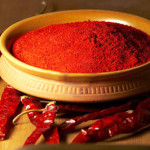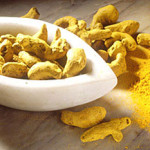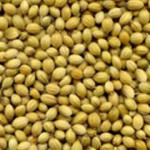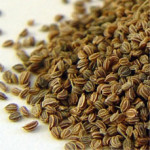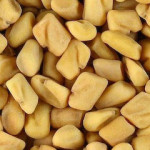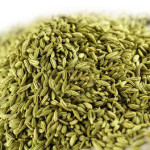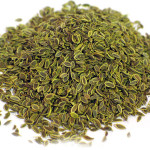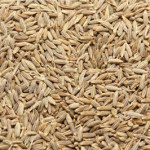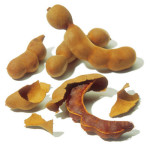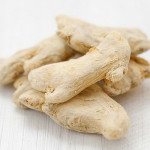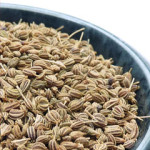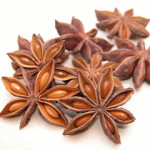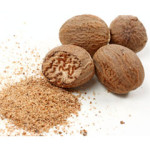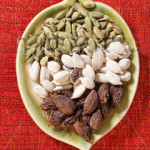Spices
- Chillies
Chillies show more or less the same aroma components as paprika, but their content in capsaicin (the amide of 3-hydroxy 2 methoxy benzylamine with 8-methyl-6-noneneoic acid) and related compounds.An indispensable and probably the most popular culinary spice in the world, chilly, has a pungent flavor. India is the largest exporter of this widely used spice.
| Scientific Name: Capsicum Annuum / Capsicum Frutescens |
| Family Name: Capsicum frutescens L. |
| Commercial part: Solanaceae Green as well as ripe and dried pod (Fruit) |
- Turmeric
Turmeric is a perennial herbaceous plant belonging to the Zingiberaceae or the ginger family. The tuberous rhizomes or underground stems have been used since ancient times as a condiment, a textile dye, and as medicine.
Turmeric is used most in the powder form. It is bright yellow in colour, has an earthy, acrid aroma and a pungent, slightly bitter flavor.
Whole turmeric contains an essential oil with a variety of sesquiterpenes. The colour and the taste come from conjugated diarylheptanoids.
-
Coriander
Among one of the first spices used by mankind, coriander seeds, is the seed of coriandrum sativum, which belongs to the parsley family. The coriander seeds are almost round in shape and brown to yellowish red in color.
It is a fragrant spice, with a mild, distinctive taste. It is widely used as a condiment in foods, beverages, marinades, desserts and sweet pastries and American cigarettes. It is also valued for its medicinal properties.
Botanical Name: Coriandrum Sativum, Linn
-
Celery Seeds
Celery leaf stalks and roots are used around the world as a vegetable. Celery seeds are used as flavoring or spice, either as whole seeds or as celery salt, ground and mixed with salt. It is an important ingredient of Indian and European cuisine.
It is valuable in weight-loss diets. The common belief is that celery yields negative calories because it is very difficult for humans to digest.
Botanical Name: Apium Graveolens
- Fenugreek Seeds
A plant belonging to the Fabaceae family, fenugreek leaves are used as a herb and the seeds as a spice. India is the largest fenugreek producer in the world.
Fenugreek seeds are hard, stony, yellowish brown and angular. They have a warm and penetrating aroma, which becomes more pronounced on roasting. Fenugreek leaves a strong bitter aftertaste.
Botanical Name: Trigonella Foenium Graceum,Linn
Fennel seeds is an ancient and common plant known to the Greeks and spread throughout Europe by Imperial Rome. The name comes from the Latin foeniculum, meaning “little hay”.
Almost all parts of the plant are useful. Fennel leaves are used in French and Italian cuisine. It is traditionally considered one of the best herbs for fish preparations.
In Norse, “dill” means “to lull”. Dill tea is believed to cure insomnia. The seed is’light brown, winged and oval, with one side flat having two ridges. The other side is convex with three ridges and three oil channels. The leaves and stalks are aromatic and are used fresh or for pickling.
Whole dill seeds has a somewhat sweet aroma but is slightly bitter in taste. The seeds contain carvone as an essential oil. Dill is considered a carminative.
Botanical Name: Anethum Graveolens
- Cumin Seeds
Cumin is native to the Levant and Upper Egypt. It now grows in most hot countries, especially India, North Africa, china and the Americas. The spice is especially associated with morocco, where it is often smelt in the abundant street cookery of the medians.
One of the most popular and essential spices of India is Cumin. Besides being used for medicinal purposes like for proper digestion and nutrient assimilation, healing of stitches and pain, cumin seed and powder are essential ingredients in many mixed spices, chutneys, and chili and curry powders.
Botanical Name: Cuminum Sativum
- Tamarind
Tamarind is a sticky, sweet-sour fruit that grows in long, bean-like pods.The fruit is mixed with sugar and dried in strips to make candy, or rendered into paste. Tamarind paste is a staple of Indian, Thai and Vietnamese cooking. It is used in many barbecue sauces.
- Ginger
Ginger is a plant that grows the best in the warm climates of China, India and Jamaica. Ginger flowers have an aromatic smell and the bruised stem a characteristic fragrance, but the root is considered the most useful part of the plant, and must not be used under a year’s growth. Dry Ginger is emollient, appetiser, laxative, stomachic, stimulant, rubefacient, aphrodisiac, expectorant and carminative. Powdered Ginger is obtained by pulverizing dried ripe fruits of Zingiber Officinale. The fine-ground, light yellow ginger powder is renowned for its subtle lemon like aroma and sharp biting flavor.
Scientific Name: Zingiber Officinale
- Ajwain Seed
Ajwain is very aromatic but less subtle in taste. It is slightly bitter, pungent and strong. Even a small amount of ajwain dominates the taste of a dish. In India, ajwain is never used raw, but is either roasted or fried in ghee, which is done to develop a stronger and more prominent aroma. It is primary used as a digestive aid and ant emetic. We offer ajwain that is grown under trained farmers, which is used for culinary as well as medicinal purposes.
- Star anise seed
Star anise comes by its name honestly, with its star shape and a licorice taste similar to regular anise, only stronger. Star anise is the seed pod of an evergreen tree (Illicium Verum) grown in southwestern China and Japan. It is about one inch high with eight segments and a dark brown rust color.
Like regular anise, star anise gets its distinctive licorice taste from a chemical compound called anethol. However the two are not related botanically – star anise is a member of the Magnolia family
- Nutmeg
One study has shown that the compound macelignan isolated from Myristica fragrans (Myristicaceae) may exert antimicrobial activity against Streptococcus mutans, but this is not a currently used treatment. Nutmeg has been used in medicine since at least the seventh century.
In the 19th century it was used as an abortifacient, which led to numerous recorded cases of nutmeg poisoning. Although used as a folk treatment for other ailments, nutmeg has no proven medicinal value today.
- Cardamom (green/black/white)
Cardamom, admired as “Queen of Spices” belongs to ginger family Zingiberaceae. It is one of the most exotic and highly priced spices across the globe after Vanilla and Saffron. Indian cardamom has a history as old as human civilization. Cardamom is a native plant of parts of India, Sri Lanka and parts of Southeast Asia, where it occurs in the wild. It has been introduced to other parts of Asia and is widely grown for its aromatic seeds. Cardamom is called as a versatile spice because of its usage in both sweet and salty foods.

